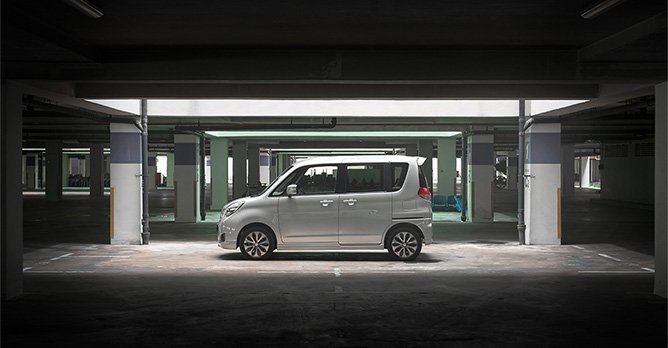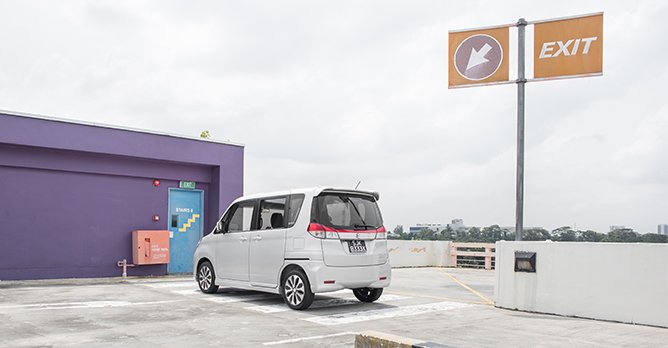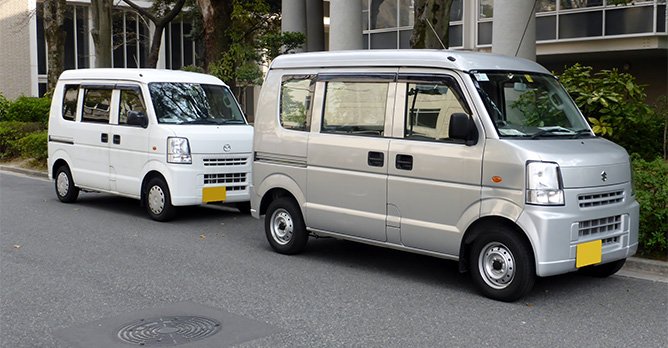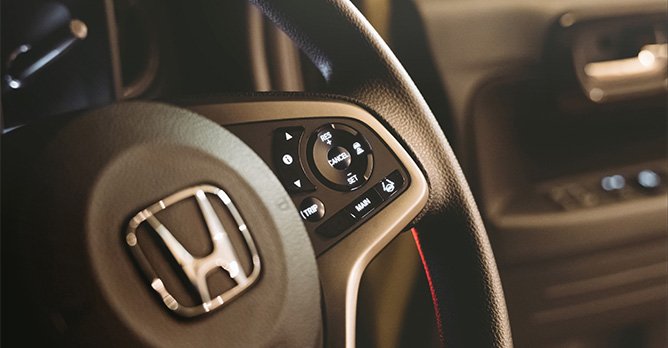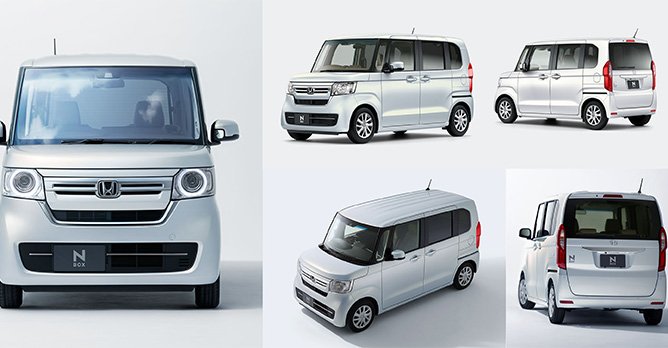Is Singapore's next kei car icon this commercial vehicle?
25 Oct 2022|17,283 views
Even in their heyday, kei cars never flew out of showroom doors at the same rate as family sedans did here. Nonetheless, it wasn't too long ago that they were much easier to spot on our roads.
Surprisingly, too, it largely wasn't Japan's Big Three that gave us these bite-sized delights to savour here. We had the R1/R2 twins from Subaru, both of which, remarkably, were offered with the firm's all-wheel drive. Decades after releasing the Perodua Kenari-inspiring Wagon R, Suzuki brought in the SOLIO. And how could we forget the Daihatsu Copen and Mitsubishi i - differing takes on the same fun-to-drive ethos?
No one can resist the genius of kei cars. Apart from charming you with their looks and impossibly clever utilisation of space, these tiny engineering marvels are dead-easy to live with thanks to their small footprints and low running costs.
The recent exorbitance of car ownership, however, has sadly crowded them out. Today, only cars that can straddle both worlds - kei and non-kei - like the Suzuki Jimny (it gets a 658cc inline-three domestically) have survived the swim from Japan to Singapore.
But the faint shimmer of a silver lining remains in the form of one recent kei star from Honda. And as an example of the hyper-specific axis on which Singapore's market spins, there's also only one way to get hold of it.
First - a recap of the current COE situation
In some way, we've (begrudgingly) accepted the once-unthinkable levels breached by the COE premiums of today. The reality was always inevitable. As a result of a vehicle population freeze for passenger cars announced years back, then recently extended, supply for all categories of passenger certificates has faced an unprecedented crunch.
With their 660cc engines, kei cars more than make the cut for Category A (technically for cheaper and smaller cars). In fact, they would still make the cut for the discontinued 'Category 1' from the 1990s - for cars with engine capacities of up to 1,000cc - if it still existed today.
To have to fork out such insane amounts of money for something so tiny is silly even if one could afford it; it flies right in the face of what the humble kei car is supposed to represent. Considering that Singapore feels like exactly the sort of environment these minute vehicles were built for, it's hard not to feel constant frustration that they've slowly been pushed out of our roads.
Still, the cold spell of the vehicle population freeze has left one category untouched. Commercial vehicles (CVs), which reside in Category C, have still been given reasonable room to breathe with a 0.25% annual growth rate up till 2025.
And therein lies a very special (kei) key.
New star rising
As a prelude to our star of the story, you'll know that one particular name has managed to weather the storms of every single season experienced in our automotive market thus far.
Suzuki's little cargo van, the Every, is still in the midst of transcending decades on our roads.
A sub-1,000-litre carrying capacity may mean that it's never been in the stable of massive delivery fleets, but the space on offer is more than perfect for individual business-owners. The Every also comes as standard with four seats (the second row capable can be folded away entirely), so it's favoured as a mode of transport. Sgcarmart even has two of these little fellas of our own.
Furthermore, apart from being utilitarian and reliable, the Every actually feels decent from behind the wheel. It's rear-wheel driven, and is offered with a turbocharged engine in higher-specced variants.
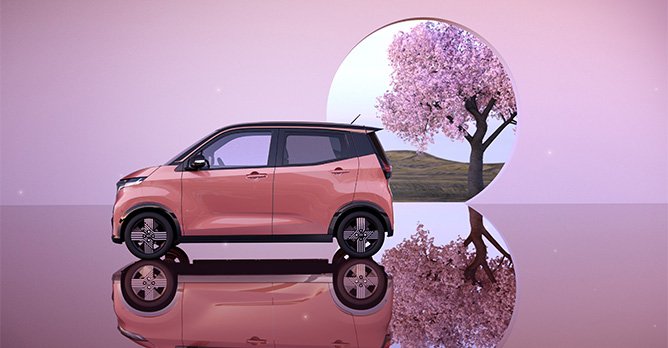
 Nissan unveiled the Sakura earlier this year - its first fully-electric kei car with up to 180km of range But the Every has aged a fair bit, and is unreflective of the new world of kei cars. To give you an idea of how these microcars are being built today, the Sakura unveiled by Nissan in May this year is fully-electric, and can even park itself.
Nissan unveiled the Sakura earlier this year - its first fully-electric kei car with up to 180km of range But the Every has aged a fair bit, and is unreflective of the new world of kei cars. To give you an idea of how these microcars are being built today, the Sakura unveiled by Nissan in May this year is fully-electric, and can even park itself.
That's why it's thrilling to know that one modern day kei car has actually crept into our midst.
In May 2021, a round-eyed box on wheels (sorry - they're mostly boxes on wheels, aren't they?) started to appear on Sgcarmart's Used Car listings.
The N-VAN is Honda's latest entrant in its revived, highly successful N-Series. It started with the N-ONE hatch and N-BOX (and N-BOX SLASH) minivan, concurrently debuting between 2011 and 2012. Then, the N-WGN appeared. When it started going on sale in 2018, the N-VAN marked the first commercial vehicle to join the young family.
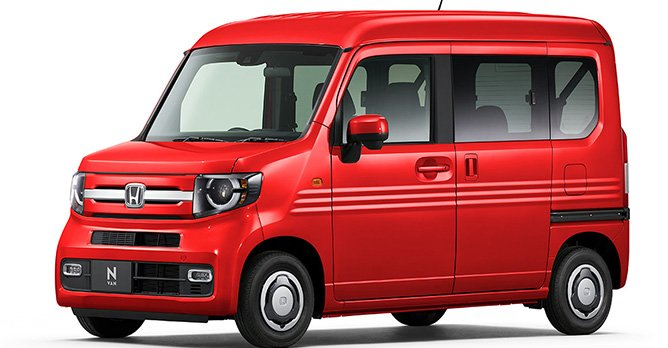
 Retrolicious: The N-VAN's circular headlamps pay homage to Honda's past in its '+ STYLE FUN' variant The familial ties are unmistakable the instant you set your eyes on the vehicle. In paying homage to the original Honda N360 of the sixties, the N-VAN '+ STYLE FUN' - the sole variant that Singapore's parallel importers appear to have brought in - puts a delightfully retrolicious spin on an otherwise plain shape.
Retrolicious: The N-VAN's circular headlamps pay homage to Honda's past in its '+ STYLE FUN' variant The familial ties are unmistakable the instant you set your eyes on the vehicle. In paying homage to the original Honda N360 of the sixties, the N-VAN '+ STYLE FUN' - the sole variant that Singapore's parallel importers appear to have brought in - puts a delightfully retrolicious spin on an otherwise plain shape.
Certainly - the format is largely the same: Four proper seats, and two rear sliding doors packed into a tall Lego brick. It also gets a turbocharged 660cc engine, albeit one that's mated to a CVT, and with a front-engine, front-wheel drive layout.
But it doesn't matter that its rear resembles that of just about any other cargo van. The N-VAN's visual personality is already fully formed with its circular LED headlamps against blacked out squares up front; its entire design elevated and standing tall purely on this design cue.
Talking about this design language shared with its siblings brings us to the first notable difference. While the Every was built from the ground up to be a commercial vehicle, the N-Van utilises the same platform used by the siblings that have gone before it, which, as you may have already noticed, are all passenger vehicles.
And as a commercial vehicle, the N-VAN also comes with its own party trick.
Riding on the literal newfound strength of the N-series chassis and body frame has allowed the N-VAN to adopt what Honda calls a 'center-pillarless body construction'.
The result? A humongous, uninterrupted opening on the left side when the front and rear doors are open. You can load/unload bulky and long items into the van more easily - or, if you're Honda, turn it into a mobile café at the Tokyo Auto Salon.
Above all, the N-VAN is a 2018 machine. While you can still buy the Every brand new today, beneath its multiple facelifted pieces of sheet metal lies a vehicle that was introduced in 2013, and has been largely unchanged since.
On the other hand, it is more than just a far more pleasing interior that contributes to the N-VAN's modern sheen.
The standard availability of Honda Sensing also reflects the strides forward in technology that Honda has taken alongside other Japanese makers in recent years with their cars. Among the features included in this comprehensive suite of safety systems are adaptive cruise control and lane keeping and braking assist systems.
Strings attached
Naturally, the picture isn't perfect. As a newer model that was also introduced as COE prices were heating up, the N-VAN still commands a significant premium over the Every according to our listings. Average depreciation for the micro-van hovers around $7,700 per year, compared to the Every's $6,100.
Those who have been paying close attention to COE trends will also know that there is a yet a bigger cloud looming over.
While still not at the highs of the passenger vehicle categories, COE premiums for CVs have also climbed significantly in recent months. It's not concretely clear why this is so, but one could possibily attribute this to the new influx of fully-electric vans. (For instance, DHL announced in June that it would be adopting at least 90 units of the Citroën e-Dispatch into its delivery fleet by the end of this month.) These are not good signs for the N-VAN's allure of affordability.
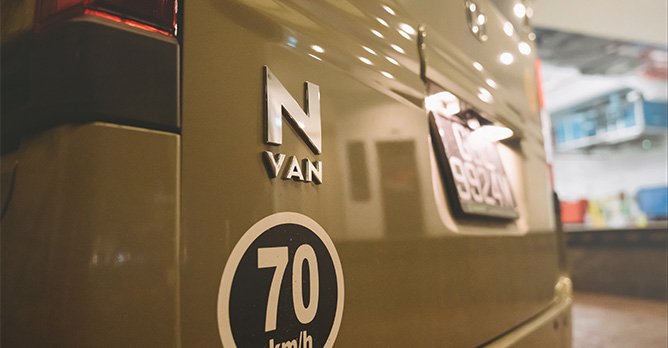
 By the very same token that has given it relative ubiquity, this cute kei star remains out of reach to most Finally, there is, of course, one not-so-tiny elephant in the room that we haven't addressed. While Category C hasn't faced the same population freeze slapped onto Categories A and B, another hurdle stands in the way: Eligibility.
By the very same token that has given it relative ubiquity, this cute kei star remains out of reach to most Finally, there is, of course, one not-so-tiny elephant in the room that we haven't addressed. While Category C hasn't faced the same population freeze slapped onto Categories A and B, another hurdle stands in the way: Eligibility.
One can only register a commercial vehicle for business use, meaning that the N-VAN cannot ultimately fall into the hands of the average family anyway.
Without going into the workarounds some motorists have for this, the fact remains that ownership is technically only possible under a registered company. You can't just walk into a showroom and fork out the cash if you want to have one in your carpark. (Financial sense is also the key consideration for CVs; this much is clear in the data. The sum of 226 listings of the N-VAN since May 2021 is genuinely not shabby, but pales greatly in comparison the the 470 listings of the Every for the same period.)
As such, by the very same token that the N-VAN has found a degree of ubiquity in Singapore, it also ironically remains far from capable of attaining true bestselling status.
Welcome nonetheless
Still, the fact remains that it is exactly through this unique set of conditions that Honda's history-respecting microvan exists here today.
In a climate where few have dared to deal in kei cars (the N-BOX is also available, but far less affordable and popular since it's been chucked into Category A), the N-VAN's presence is crucial. It isn't just living, driveable proof of modern kei cars, but also an escape rope, holding out hope that the lineage of these loveable microcars will not be ruptured by our taxes. Sure - many strings are attached to its existence, but our roads are surely better off with it on them than without.
Here are other stories that may interest you!
These Kei cars on sale in Singapore are so cool that even the wife will approve
These namesplates were in Singapore for only one generation
MINI One against Fiat 500: Titanic supermini showdown
Here are the eight lightweight cars you can still buy new
Surprisingly, too, it largely wasn't Japan's Big Three that gave us these bite-sized delights to savour here. We had the R1/R2 twins from Subaru, both of which, remarkably, were offered with the firm's all-wheel drive. Decades after releasing the Perodua Kenari-inspiring Wagon R, Suzuki brought in the SOLIO. And how could we forget the Daihatsu Copen and Mitsubishi i - differing takes on the same fun-to-drive ethos?
No one can resist the genius of kei cars. Apart from charming you with their looks and impossibly clever utilisation of space, these tiny engineering marvels are dead-easy to live with thanks to their small footprints and low running costs.
The recent exorbitance of car ownership, however, has sadly crowded them out. Today, only cars that can straddle both worlds - kei and non-kei - like the Suzuki Jimny (it gets a 658cc inline-three domestically) have survived the swim from Japan to Singapore.
But the faint shimmer of a silver lining remains in the form of one recent kei star from Honda. And as an example of the hyper-specific axis on which Singapore's market spins, there's also only one way to get hold of it.
First - a recap of the current COE situation
In some way, we've (begrudgingly) accepted the once-unthinkable levels breached by the COE premiums of today. The reality was always inevitable. As a result of a vehicle population freeze for passenger cars announced years back, then recently extended, supply for all categories of passenger certificates has faced an unprecedented crunch.
With their 660cc engines, kei cars more than make the cut for Category A (technically for cheaper and smaller cars). In fact, they would still make the cut for the discontinued 'Category 1' from the 1990s - for cars with engine capacities of up to 1,000cc - if it still existed today.
To have to fork out such insane amounts of money for something so tiny is silly even if one could afford it; it flies right in the face of what the humble kei car is supposed to represent. Considering that Singapore feels like exactly the sort of environment these minute vehicles were built for, it's hard not to feel constant frustration that they've slowly been pushed out of our roads.
Still, the cold spell of the vehicle population freeze has left one category untouched. Commercial vehicles (CVs), which reside in Category C, have still been given reasonable room to breathe with a 0.25% annual growth rate up till 2025.
And therein lies a very special (kei) key.
New star rising
As a prelude to our star of the story, you'll know that one particular name has managed to weather the storms of every single season experienced in our automotive market thus far.
Suzuki's little cargo van, the Every, is still in the midst of transcending decades on our roads.
A sub-1,000-litre carrying capacity may mean that it's never been in the stable of massive delivery fleets, but the space on offer is more than perfect for individual business-owners. The Every also comes as standard with four seats (the second row capable can be folded away entirely), so it's favoured as a mode of transport. Sgcarmart even has two of these little fellas of our own.
Furthermore, apart from being utilitarian and reliable, the Every actually feels decent from behind the wheel. It's rear-wheel driven, and is offered with a turbocharged engine in higher-specced variants.

That's why it's thrilling to know that one modern day kei car has actually crept into our midst.
In May 2021, a round-eyed box on wheels (sorry - they're mostly boxes on wheels, aren't they?) started to appear on Sgcarmart's Used Car listings.
The N-VAN is Honda's latest entrant in its revived, highly successful N-Series. It started with the N-ONE hatch and N-BOX (and N-BOX SLASH) minivan, concurrently debuting between 2011 and 2012. Then, the N-WGN appeared. When it started going on sale in 2018, the N-VAN marked the first commercial vehicle to join the young family.

Certainly - the format is largely the same: Four proper seats, and two rear sliding doors packed into a tall Lego brick. It also gets a turbocharged 660cc engine, albeit one that's mated to a CVT, and with a front-engine, front-wheel drive layout.
But it doesn't matter that its rear resembles that of just about any other cargo van. The N-VAN's visual personality is already fully formed with its circular LED headlamps against blacked out squares up front; its entire design elevated and standing tall purely on this design cue.
Talking about this design language shared with its siblings brings us to the first notable difference. While the Every was built from the ground up to be a commercial vehicle, the N-Van utilises the same platform used by the siblings that have gone before it, which, as you may have already noticed, are all passenger vehicles.
And as a commercial vehicle, the N-VAN also comes with its own party trick.
Riding on the literal newfound strength of the N-series chassis and body frame has allowed the N-VAN to adopt what Honda calls a 'center-pillarless body construction'.
The result? A humongous, uninterrupted opening on the left side when the front and rear doors are open. You can load/unload bulky and long items into the van more easily - or, if you're Honda, turn it into a mobile café at the Tokyo Auto Salon.
Above all, the N-VAN is a 2018 machine. While you can still buy the Every brand new today, beneath its multiple facelifted pieces of sheet metal lies a vehicle that was introduced in 2013, and has been largely unchanged since.
On the other hand, it is more than just a far more pleasing interior that contributes to the N-VAN's modern sheen.
The standard availability of Honda Sensing also reflects the strides forward in technology that Honda has taken alongside other Japanese makers in recent years with their cars. Among the features included in this comprehensive suite of safety systems are adaptive cruise control and lane keeping and braking assist systems.
Strings attached
Naturally, the picture isn't perfect. As a newer model that was also introduced as COE prices were heating up, the N-VAN still commands a significant premium over the Every according to our listings. Average depreciation for the micro-van hovers around $7,700 per year, compared to the Every's $6,100.
Those who have been paying close attention to COE trends will also know that there is a yet a bigger cloud looming over.
While still not at the highs of the passenger vehicle categories, COE premiums for CVs have also climbed significantly in recent months. It's not concretely clear why this is so, but one could possibily attribute this to the new influx of fully-electric vans. (For instance, DHL announced in June that it would be adopting at least 90 units of the Citroën e-Dispatch into its delivery fleet by the end of this month.) These are not good signs for the N-VAN's allure of affordability.

One can only register a commercial vehicle for business use, meaning that the N-VAN cannot ultimately fall into the hands of the average family anyway.
Without going into the workarounds some motorists have for this, the fact remains that ownership is technically only possible under a registered company. You can't just walk into a showroom and fork out the cash if you want to have one in your carpark. (Financial sense is also the key consideration for CVs; this much is clear in the data. The sum of 226 listings of the N-VAN since May 2021 is genuinely not shabby, but pales greatly in comparison the the 470 listings of the Every for the same period.)
As such, by the very same token that the N-VAN has found a degree of ubiquity in Singapore, it also ironically remains far from capable of attaining true bestselling status.
Welcome nonetheless
Still, the fact remains that it is exactly through this unique set of conditions that Honda's history-respecting microvan exists here today.
In a climate where few have dared to deal in kei cars (the N-BOX is also available, but far less affordable and popular since it's been chucked into Category A), the N-VAN's presence is crucial. It isn't just living, driveable proof of modern kei cars, but also an escape rope, holding out hope that the lineage of these loveable microcars will not be ruptured by our taxes. Sure - many strings are attached to its existence, but our roads are surely better off with it on them than without.
Here are other stories that may interest you!
These Kei cars on sale in Singapore are so cool that even the wife will approve
These namesplates were in Singapore for only one generation
MINI One against Fiat 500: Titanic supermini showdown
Here are the eight lightweight cars you can still buy new
Even in their heyday, kei cars never flew out of showroom doors at the same rate as family sedans did here. Nonetheless, it wasn't too long ago that they were much easier to spot on our roads.
Surprisingly, too, it largely wasn't Japan's Big Three that gave us these bite-sized delights to savour here. We had the R1/R2 twins from Subaru, both of which, remarkably, were offered with the firm's all-wheel drive. Decades after releasing the Perodua Kenari-inspiring Wagon R, Suzuki brought in the SOLIO. And how could we forget the Daihatsu Copen and Mitsubishi i - differing takes on the same fun-to-drive ethos?
No one can resist the genius of kei cars. Apart from charming you with their looks and impossibly clever utilisation of space, these tiny engineering marvels are dead-easy to live with thanks to their small footprints and low running costs.
The recent exorbitance of car ownership, however, has sadly crowded them out. Today, only cars that can straddle both worlds - kei and non-kei - like the Suzuki Jimny (it gets a 658cc inline-three domestically) have survived the swim from Japan to Singapore.
But the faint shimmer of a silver lining remains in the form of one recent kei star from Honda. And as an example of the hyper-specific axis on which Singapore's market spins, there's also only one way to get hold of it.
First - a recap of the current COE situation
In some way, we've (begrudgingly) accepted the once-unthinkable levels breached by the COE premiums of today. The reality was always inevitable. As a result of a vehicle population freeze for passenger cars announced years back, then recently extended, supply for all categories of passenger certificates has faced an unprecedented crunch.
With their 660cc engines, kei cars more than make the cut for Category A (technically for cheaper and smaller cars). In fact, they would still make the cut for the discontinued 'Category 1' from the 1990s - for cars with engine capacities of up to 1,000cc - if it still existed today.
To have to fork out such insane amounts of money for something so tiny is silly even if one could afford it; it flies right in the face of what the humble kei car is supposed to represent. Considering that Singapore feels like exactly the sort of environment these minute vehicles were built for, it's hard not to feel constant frustration that they've slowly been pushed out of our roads.
Still, the cold spell of the vehicle population freeze has left one category untouched. Commercial vehicles (CVs), which reside in Category C, have still been given reasonable room to breathe with a 0.25% annual growth rate up till 2025.
And therein lies a very special (kei) key.
New star rising
As a prelude to our star of the story, you'll know that one particular name has managed to weather the storms of every single season experienced in our automotive market thus far.
Suzuki's little cargo van, the Every, is still in the midst of transcending decades on our roads.
A sub-1,000-litre carrying capacity may mean that it's never been in the stable of massive delivery fleets, but the space on offer is more than perfect for individual business-owners. The Every also comes as standard with four seats (the second row capable can be folded away entirely), so it's favoured as a mode of transport. Sgcarmart even has two of these little fellas of our own.
Furthermore, apart from being utilitarian and reliable, the Every actually feels decent from behind the wheel. It's rear-wheel driven, and is offered with a turbocharged engine in higher-specced variants.

 Nissan unveiled the Sakura earlier this year - its first fully-electric kei car with up to 180km of range But the Every has aged a fair bit, and is unreflective of the new world of kei cars. To give you an idea of how these microcars are being built today, the Sakura unveiled by Nissan in May this year is fully-electric, and can even park itself.
Nissan unveiled the Sakura earlier this year - its first fully-electric kei car with up to 180km of range But the Every has aged a fair bit, and is unreflective of the new world of kei cars. To give you an idea of how these microcars are being built today, the Sakura unveiled by Nissan in May this year is fully-electric, and can even park itself.
That's why it's thrilling to know that one modern day kei car has actually crept into our midst.
In May 2021, a round-eyed box on wheels (sorry - they're mostly boxes on wheels, aren't they?) started to appear on Sgcarmart's Used Car listings.
The N-VAN is Honda's latest entrant in its revived, highly successful N-Series. It started with the N-ONE hatch and N-BOX (and N-BOX SLASH) minivan, concurrently debuting between 2011 and 2012. Then, the N-WGN appeared. When it started going on sale in 2018, the N-VAN marked the first commercial vehicle to join the young family.

 Retrolicious: The N-VAN's circular headlamps pay homage to Honda's past in its '+ STYLE FUN' variant The familial ties are unmistakable the instant you set your eyes on the vehicle. In paying homage to the original Honda N360 of the sixties, the N-VAN '+ STYLE FUN' - the sole variant that Singapore's parallel importers appear to have brought in - puts a delightfully retrolicious spin on an otherwise plain shape.
Retrolicious: The N-VAN's circular headlamps pay homage to Honda's past in its '+ STYLE FUN' variant The familial ties are unmistakable the instant you set your eyes on the vehicle. In paying homage to the original Honda N360 of the sixties, the N-VAN '+ STYLE FUN' - the sole variant that Singapore's parallel importers appear to have brought in - puts a delightfully retrolicious spin on an otherwise plain shape.
Certainly - the format is largely the same: Four proper seats, and two rear sliding doors packed into a tall Lego brick. It also gets a turbocharged 660cc engine, albeit one that's mated to a CVT, and with a front-engine, front-wheel drive layout.
But it doesn't matter that its rear resembles that of just about any other cargo van. The N-VAN's visual personality is already fully formed with its circular LED headlamps against blacked out squares up front; its entire design elevated and standing tall purely on this design cue.
Talking about this design language shared with its siblings brings us to the first notable difference. While the Every was built from the ground up to be a commercial vehicle, the N-Van utilises the same platform used by the siblings that have gone before it, which, as you may have already noticed, are all passenger vehicles.
And as a commercial vehicle, the N-VAN also comes with its own party trick.
Riding on the literal newfound strength of the N-series chassis and body frame has allowed the N-VAN to adopt what Honda calls a 'center-pillarless body construction'.
The result? A humongous, uninterrupted opening on the left side when the front and rear doors are open. You can load/unload bulky and long items into the van more easily - or, if you're Honda, turn it into a mobile café at the Tokyo Auto Salon.
Above all, the N-VAN is a 2018 machine. While you can still buy the Every brand new today, beneath its multiple facelifted pieces of sheet metal lies a vehicle that was introduced in 2013, and has been largely unchanged since.
On the other hand, it is more than just a far more pleasing interior that contributes to the N-VAN's modern sheen.
The standard availability of Honda Sensing also reflects the strides forward in technology that Honda has taken alongside other Japanese makers in recent years with their cars. Among the features included in this comprehensive suite of safety systems are adaptive cruise control and lane keeping and braking assist systems.
Strings attached
Naturally, the picture isn't perfect. As a newer model that was also introduced as COE prices were heating up, the N-VAN still commands a significant premium over the Every according to our listings. Average depreciation for the micro-van hovers around $7,700 per year, compared to the Every's $6,100.
Those who have been paying close attention to COE trends will also know that there is a yet a bigger cloud looming over.
While still not at the highs of the passenger vehicle categories, COE premiums for CVs have also climbed significantly in recent months. It's not concretely clear why this is so, but one could possibily attribute this to the new influx of fully-electric vans. (For instance, DHL announced in June that it would be adopting at least 90 units of the Citroën e-Dispatch into its delivery fleet by the end of this month.) These are not good signs for the N-VAN's allure of affordability.

 By the very same token that has given it relative ubiquity, this cute kei star remains out of reach to most Finally, there is, of course, one not-so-tiny elephant in the room that we haven't addressed. While Category C hasn't faced the same population freeze slapped onto Categories A and B, another hurdle stands in the way: Eligibility.
By the very same token that has given it relative ubiquity, this cute kei star remains out of reach to most Finally, there is, of course, one not-so-tiny elephant in the room that we haven't addressed. While Category C hasn't faced the same population freeze slapped onto Categories A and B, another hurdle stands in the way: Eligibility.
One can only register a commercial vehicle for business use, meaning that the N-VAN cannot ultimately fall into the hands of the average family anyway.
Without going into the workarounds some motorists have for this, the fact remains that ownership is technically only possible under a registered company. You can't just walk into a showroom and fork out the cash if you want to have one in your carpark. (Financial sense is also the key consideration for CVs; this much is clear in the data. The sum of 226 listings of the N-VAN since May 2021 is genuinely not shabby, but pales greatly in comparison the the 470 listings of the Every for the same period.)
As such, by the very same token that the N-VAN has found a degree of ubiquity in Singapore, it also ironically remains far from capable of attaining true bestselling status.
Welcome nonetheless
Still, the fact remains that it is exactly through this unique set of conditions that Honda's history-respecting microvan exists here today.
In a climate where few have dared to deal in kei cars (the N-BOX is also available, but far less affordable and popular since it's been chucked into Category A), the N-VAN's presence is crucial. It isn't just living, driveable proof of modern kei cars, but also an escape rope, holding out hope that the lineage of these loveable microcars will not be ruptured by our taxes. Sure - many strings are attached to its existence, but our roads are surely better off with it on them than without.
Here are other stories that may interest you!
These Kei cars on sale in Singapore are so cool that even the wife will approve
These namesplates were in Singapore for only one generation
MINI One against Fiat 500: Titanic supermini showdown
Here are the eight lightweight cars you can still buy new
Surprisingly, too, it largely wasn't Japan's Big Three that gave us these bite-sized delights to savour here. We had the R1/R2 twins from Subaru, both of which, remarkably, were offered with the firm's all-wheel drive. Decades after releasing the Perodua Kenari-inspiring Wagon R, Suzuki brought in the SOLIO. And how could we forget the Daihatsu Copen and Mitsubishi i - differing takes on the same fun-to-drive ethos?
No one can resist the genius of kei cars. Apart from charming you with their looks and impossibly clever utilisation of space, these tiny engineering marvels are dead-easy to live with thanks to their small footprints and low running costs.
The recent exorbitance of car ownership, however, has sadly crowded them out. Today, only cars that can straddle both worlds - kei and non-kei - like the Suzuki Jimny (it gets a 658cc inline-three domestically) have survived the swim from Japan to Singapore.
But the faint shimmer of a silver lining remains in the form of one recent kei star from Honda. And as an example of the hyper-specific axis on which Singapore's market spins, there's also only one way to get hold of it.
First - a recap of the current COE situation
In some way, we've (begrudgingly) accepted the once-unthinkable levels breached by the COE premiums of today. The reality was always inevitable. As a result of a vehicle population freeze for passenger cars announced years back, then recently extended, supply for all categories of passenger certificates has faced an unprecedented crunch.
With their 660cc engines, kei cars more than make the cut for Category A (technically for cheaper and smaller cars). In fact, they would still make the cut for the discontinued 'Category 1' from the 1990s - for cars with engine capacities of up to 1,000cc - if it still existed today.
To have to fork out such insane amounts of money for something so tiny is silly even if one could afford it; it flies right in the face of what the humble kei car is supposed to represent. Considering that Singapore feels like exactly the sort of environment these minute vehicles were built for, it's hard not to feel constant frustration that they've slowly been pushed out of our roads.
Still, the cold spell of the vehicle population freeze has left one category untouched. Commercial vehicles (CVs), which reside in Category C, have still been given reasonable room to breathe with a 0.25% annual growth rate up till 2025.
And therein lies a very special (kei) key.
New star rising
As a prelude to our star of the story, you'll know that one particular name has managed to weather the storms of every single season experienced in our automotive market thus far.
Suzuki's little cargo van, the Every, is still in the midst of transcending decades on our roads.
A sub-1,000-litre carrying capacity may mean that it's never been in the stable of massive delivery fleets, but the space on offer is more than perfect for individual business-owners. The Every also comes as standard with four seats (the second row capable can be folded away entirely), so it's favoured as a mode of transport. Sgcarmart even has two of these little fellas of our own.
Furthermore, apart from being utilitarian and reliable, the Every actually feels decent from behind the wheel. It's rear-wheel driven, and is offered with a turbocharged engine in higher-specced variants.

That's why it's thrilling to know that one modern day kei car has actually crept into our midst.
In May 2021, a round-eyed box on wheels (sorry - they're mostly boxes on wheels, aren't they?) started to appear on Sgcarmart's Used Car listings.
The N-VAN is Honda's latest entrant in its revived, highly successful N-Series. It started with the N-ONE hatch and N-BOX (and N-BOX SLASH) minivan, concurrently debuting between 2011 and 2012. Then, the N-WGN appeared. When it started going on sale in 2018, the N-VAN marked the first commercial vehicle to join the young family.

Certainly - the format is largely the same: Four proper seats, and two rear sliding doors packed into a tall Lego brick. It also gets a turbocharged 660cc engine, albeit one that's mated to a CVT, and with a front-engine, front-wheel drive layout.
But it doesn't matter that its rear resembles that of just about any other cargo van. The N-VAN's visual personality is already fully formed with its circular LED headlamps against blacked out squares up front; its entire design elevated and standing tall purely on this design cue.
Talking about this design language shared with its siblings brings us to the first notable difference. While the Every was built from the ground up to be a commercial vehicle, the N-Van utilises the same platform used by the siblings that have gone before it, which, as you may have already noticed, are all passenger vehicles.
And as a commercial vehicle, the N-VAN also comes with its own party trick.
Riding on the literal newfound strength of the N-series chassis and body frame has allowed the N-VAN to adopt what Honda calls a 'center-pillarless body construction'.
The result? A humongous, uninterrupted opening on the left side when the front and rear doors are open. You can load/unload bulky and long items into the van more easily - or, if you're Honda, turn it into a mobile café at the Tokyo Auto Salon.
Above all, the N-VAN is a 2018 machine. While you can still buy the Every brand new today, beneath its multiple facelifted pieces of sheet metal lies a vehicle that was introduced in 2013, and has been largely unchanged since.
On the other hand, it is more than just a far more pleasing interior that contributes to the N-VAN's modern sheen.
The standard availability of Honda Sensing also reflects the strides forward in technology that Honda has taken alongside other Japanese makers in recent years with their cars. Among the features included in this comprehensive suite of safety systems are adaptive cruise control and lane keeping and braking assist systems.
Strings attached
Naturally, the picture isn't perfect. As a newer model that was also introduced as COE prices were heating up, the N-VAN still commands a significant premium over the Every according to our listings. Average depreciation for the micro-van hovers around $7,700 per year, compared to the Every's $6,100.
Those who have been paying close attention to COE trends will also know that there is a yet a bigger cloud looming over.
While still not at the highs of the passenger vehicle categories, COE premiums for CVs have also climbed significantly in recent months. It's not concretely clear why this is so, but one could possibily attribute this to the new influx of fully-electric vans. (For instance, DHL announced in June that it would be adopting at least 90 units of the Citroën e-Dispatch into its delivery fleet by the end of this month.) These are not good signs for the N-VAN's allure of affordability.

One can only register a commercial vehicle for business use, meaning that the N-VAN cannot ultimately fall into the hands of the average family anyway.
Without going into the workarounds some motorists have for this, the fact remains that ownership is technically only possible under a registered company. You can't just walk into a showroom and fork out the cash if you want to have one in your carpark. (Financial sense is also the key consideration for CVs; this much is clear in the data. The sum of 226 listings of the N-VAN since May 2021 is genuinely not shabby, but pales greatly in comparison the the 470 listings of the Every for the same period.)
As such, by the very same token that the N-VAN has found a degree of ubiquity in Singapore, it also ironically remains far from capable of attaining true bestselling status.
Welcome nonetheless
Still, the fact remains that it is exactly through this unique set of conditions that Honda's history-respecting microvan exists here today.
In a climate where few have dared to deal in kei cars (the N-BOX is also available, but far less affordable and popular since it's been chucked into Category A), the N-VAN's presence is crucial. It isn't just living, driveable proof of modern kei cars, but also an escape rope, holding out hope that the lineage of these loveable microcars will not be ruptured by our taxes. Sure - many strings are attached to its existence, but our roads are surely better off with it on them than without.
Here are other stories that may interest you!
These Kei cars on sale in Singapore are so cool that even the wife will approve
These namesplates were in Singapore for only one generation
MINI One against Fiat 500: Titanic supermini showdown
Here are the eight lightweight cars you can still buy new
Thank You For Your Subscription.

















